TALLINN

Copterline took us from Helsinki to Tallinn in around 20 minutes, but you can also take a ferry or seacat. The seacat takes around 1 hour 40 minutes to travel from Helsinki to Tallinn.
Tallinn joined the EU in May 2004, so it's very easy to get to now, hardly any waiting at Passport control and no worries about bringing in more than your 'allowance' of gifts.
Tallinn delights in many claims; here are a few of them.
Tallinn was put on the world map in 1154 by Arabian geographer al-Idrisi. He found “a small town like a large castle” and a busy port here. But Tallinn was a meeting point between east and west already centuries earlier.
Until late 1800s, St. Olaf’s Church in Tallinn was the tallest building ever built. In 1500, its spire rose to a dizzying height of 159 meters. Its unparalleled size symbolized the glory of medieval Tallinn, whose golden age flourished in the 14th to the 16th century.
The oldest continually functioning apothecary in the world has been in business in Tallinn’s Town Hall Square since 1422.
The Town Hall, the only intact Gothic town hall in Northern Europe, is one of the most famed symbols of the city. In 2004 the Town Hall celebrated its 600th anniversary.
Old Town of Tallinn, belonging to UNESCO’s World Heritage list since 1997, is the best preserved old town in Northern Europe. The authenticity of its medieval atmosphere makes Tallinn’s Old Town unique.
There is a lot to see in Tallinn, from the Town Square and Hall, St Olaf's Church, the Alexander Nevsky Cathedral , Kiek in de Kök, to Toompea Castle and much more. I only scratched the surface of Tallinn's amazing history and will have to go back to experience the rest!
Kiek in de Kök
was the most powerful cannon tower in 16th-century Northern Europe. It is
written that Kiek in de Kök was once the most powerful
tower along the Baltic shores.
The round cannon tower, built in the latter part of the 15th century, had a
diameter of 17 meters. Its height is 38 meters and its walls are 4 meters
thick. The tower was just high enough that its guards had a view into the
kitchens of neighbouring buildings. Of course the view also extended to the
enemy’s rear. The tower’s name, "peek in the kitchen", comes from its
height.
The tower was partially destroyed during the Livonian War (1558-1583), but
the building itself did not fall. The tower has been rebuilt several times,
but up until the 20th century, it was still being used as a gun powder
storage and storehouse. Both the exterior and interior of the tower are
restored to their 17th century appearance.
Today the tower holds a permanent
exhibit on the emergence of Tallinn, on three floors, tells the story of the
birth and development of Tallinn and the most important military events from
the 13th to the 18th centuries. The external
wall still holds stone and iron
cannonballs from Russian tsar
Ivan IV.
Toompea Castle is one of Estonia’s oldest and grandest architectural
groupings.
Built in the 13th to the 14th centuries, the castle is situated on the steep
limestone coast, 50 meters above sea level. It is one of the most potent
symbols of reigning power, conquered over the centuries by various nations.
Today, the Estonian Parliament is housed here.
Tall Hermann was built in the southwestern corner of Toompea Fortress at the
end of the 14th century. The name of the tower comes from the German phrase
"Lange Hermann" meaning "tall soldier" or "chief" and comes from the tales
of the adored medieval hero Hermann. This sort of name was usually given to
the most powerful towers in a
fortress.
Alexander Nevsky Cathedral is Tallinn’s largest and grandest cupola
cathedral.
The large, richly decorated Orthodox church, in mixed historicist style, was
built on Toompea Hill in 1900, when Estonia was part of the Russian tsarist
empire. The architect of the church was Mikhail Preobrazhenski from
St.
Petersburg. The church is dedicated to the Prince of Novgorod, Alexander Yaroslavitz Nevsky, who led the famous Ice Battle on the banks of Lake
Peipsi on 5 April, 1242 and halted the Germans' eastward advance.
Before the building of the cathedral, there was a garden on the same site,
in front of Toompea Castle, with a memorial to Martin Luther. The
well-maintained cathedral is the grandest sacred Orthodox structure in
Tallinn.
The church’s belltowers hold Tallinn’s most powerful church bell ensemble,
consisting of 11 bells, including the largest in Tallinn, weighing 15
tonnes. You can hear the entire bell ensemble playing before church
services. The interior is decorated with mosaics and icons, and there is a
well stocked gift shop!
The Cathedral of
Saint Mary the Virgin is the main Lutheran church in Estonia and one of
three functioning medieval churches.
The present appearance of the Cathedral is the result of much rebuilding.
The original temporary wooden church is thought to have been built on
Toompea Hill in 1219, and was first mentioned in 1233. The stone church was
begun ten years later. The spire dates to the baroque period, and several
chapels, from even later periods.
Notable items in the church’s interior include numerous gravestones from the
13th to the 18th centuries and numerous nobles' shield epitaphs from the
17th to the 20th centuries.
After all this sightseeing, it was time for something to eat. What
better place to go than Vanaema
Juures (Grandma's Place), a small and homely cellar restaurant that is the
best place for local cuisine. I couldn't resist the elk, although the
wild boar was very tempting.
After Grandma's, we headed to a couple of fun shops. Not the usual tourist souveneirs, we visited the Navitrolla gallery (www.navitrolla.com). I bought a mug and a couple of prints, including one shown below called "Each Falling Star Doesn't Forfill Wishes" . From there, another local craft shop, where I purchased some hand painted silk ties, featuring lions and pigs on them!
From there to the hotel
for a coffee, followed by a massage. At the excellent price of 350 EEK
(Estonian Kroon) it was well
worth it!
After a quick shower, it was time to grab a taxi and head for the moment that the whole trip had been planned for. The KRAFTWERK concert! It seemed that half of Tallinn was trying to get into the concert, the massed crowd of people at the entrance was huge. I didn't like the signs saying no guns or knives either!
However, once inside it was all quite calm. We took our seats on the balcony and waited for the evening to start.
You can see the photos, and listen to a couple of clips of Kraftwerk's music here.
Return to my Helsinki page here
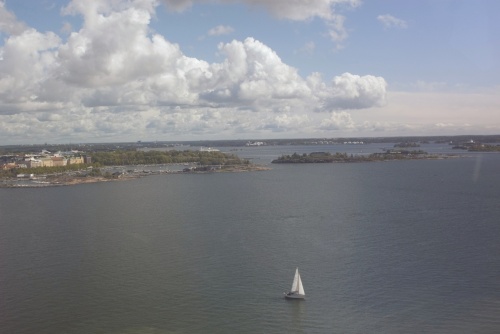
Leaving Helsinki in the helicopter
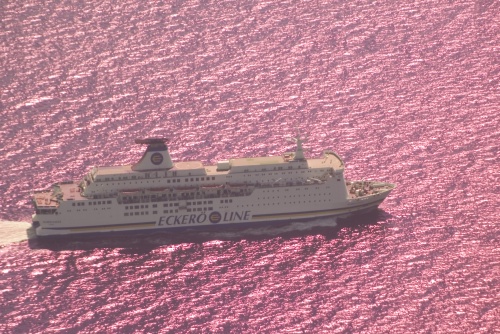
As we flew past the ferry I took this photo. The combination of my
polarising filter and the copter window glass made for a rich magenta sea!
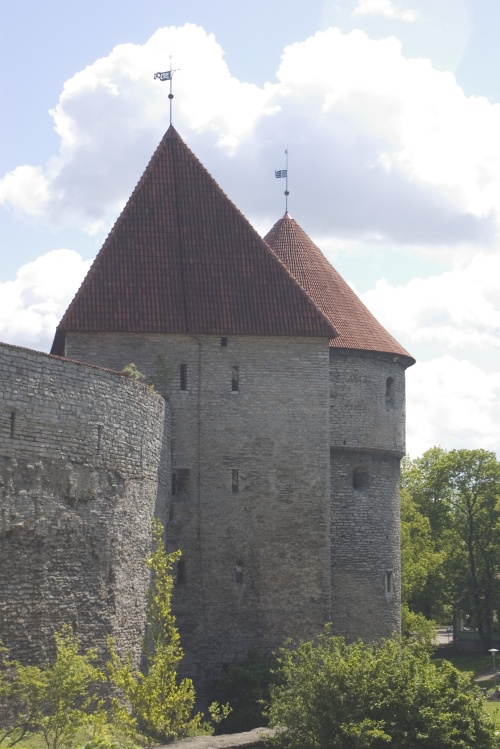
Kiek in de Kök
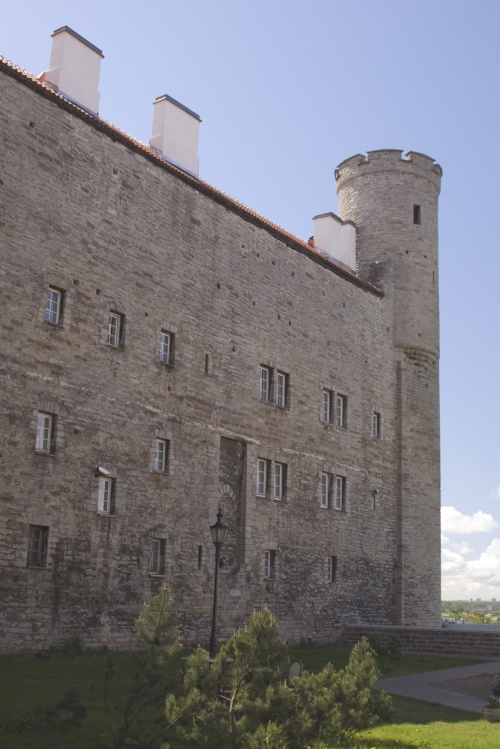
Toompea Castle

Alexander Nevski Cathedral
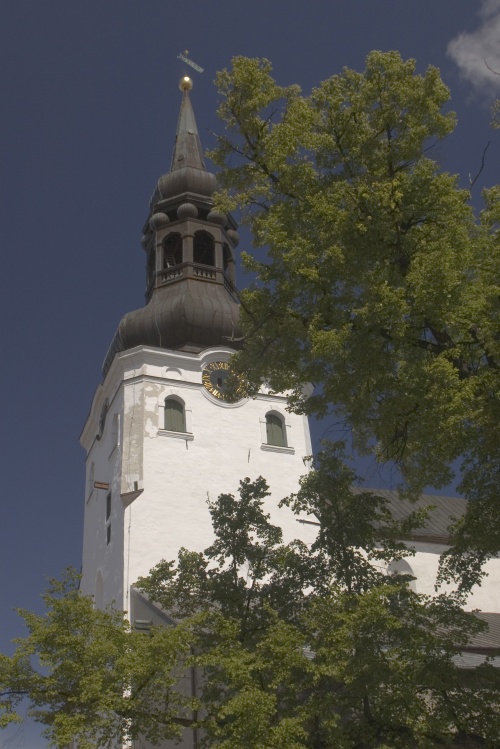
The Cathedral of Saint Mary the Virgin
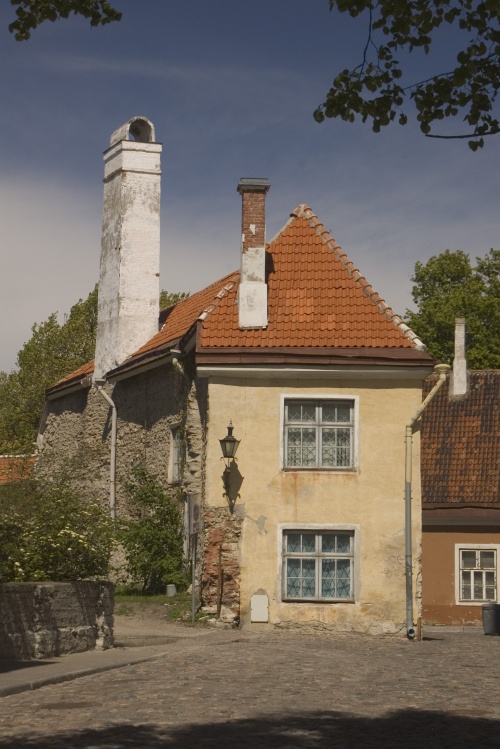
One of Tallinn's medieval homes, by the Cathedral of St. Mary the Virgin
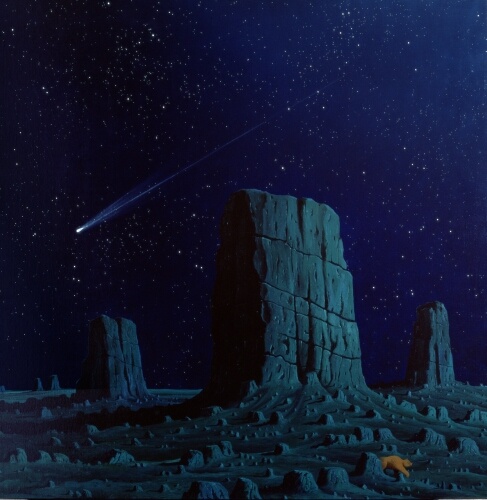
Each Falling Star Doesn't Forfill Wishes - from the Navitrolla Gallery